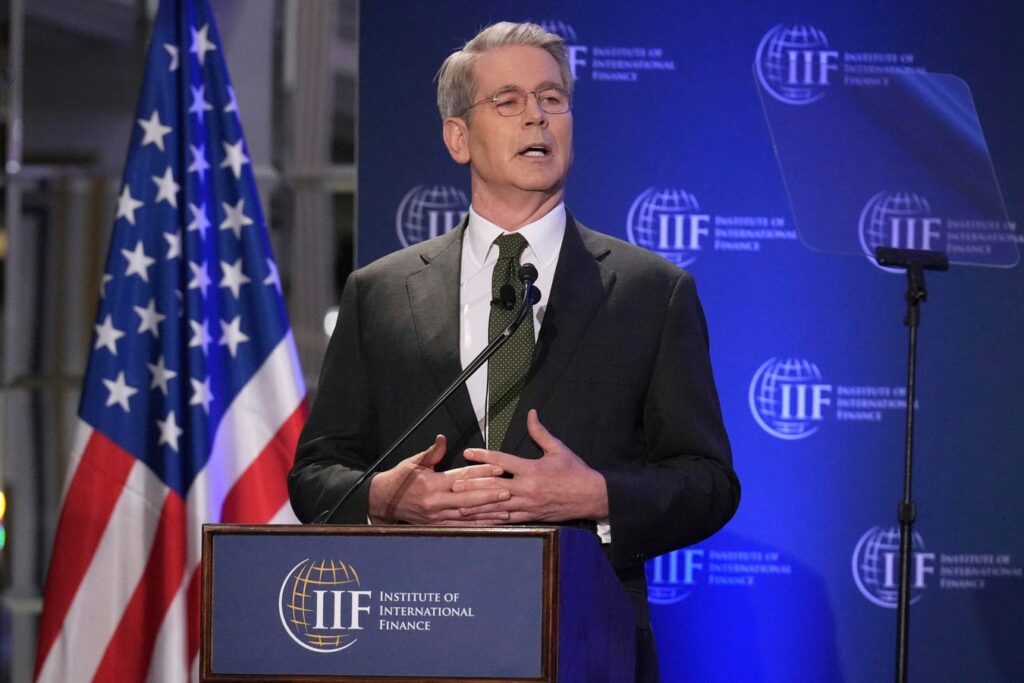A powerful U.S. Treasury advisory group sees stablecoins emerging as a major new source of demand for government debt. With the market projected to reach $2 trillion by 2028—nearly all of it dollar-denominated. At its meeting last week, the Treasury Borrowing Advisory Committee —comprising senior executives from BlackRock, JPMorgan, and other major financial institutions reporting to Treasury Secretary Scott Bessen—highlighted the stablecoin market as a rapidly expanding force in creating new Treasury demand. The implication is clear: current regulatory proposals could channel more stablecoin reserves into U.S. Treasuries than China currently holds.
While the committee stopped short of making direct comparisons, its analysis suggests that if projected growth materializes and legislation like the GENIUS Act is enacted, stablecoin demand could rival that of traditional sovereign creditors.
Designing Demand For Treasuries
With the GENIUS Act expected this August, U.S. dollar stablecoin issuers like Tether and Circle will be required to hold reserves—including Treasuries—positioning them as major institutional buyers. That demand could surpass the $784 billion currently held by China, reshaping how the U.S. finances its debt.
This isn’t just regulatory housekeeping—it’s strategic fiscal architecture. “The ultimate design and adoption of stablecoins will drive the magnitude of impact they have on U.S. Treasury demand,” the TBAC wrote in its meeting minutes.
By designating T-bills with maturities under 93 days as eligible reserves, the proposed rules would position stablecoin issuers as key players at the front end of the curve. The GENIUS Act goes further, allowing those Treasuries to be used as repo collateral—making them even more attractive as backing for stablecoins.
Foreign Creditors Vs. Stablecoins
Japan and China—the top two foreign holders of U.S. Treasuries—currently hold $1.13 trillion and $784 billion, respectively. Combined, that’s still less than the projected $2 trillion market cap of stablecoins by 2028.
If that projection holds, U.S. dollar stablecoins could soon rival or surpass traditional sovereign creditors. This isn’t just crypto—it’s a structural shift in how America funds itself, trading geopolitical reliance for market-based infrastructure powered by code and regulation.
Backed By Washington D.C.
Stablecoin issuers are already acting like institutional buyers of U.S. Treasuries. Over $120 billion in short-term Treasuries back stablecoins today, with another $90 billion in money market funds. Unlike banks, which operate on fractional reserves, stablecoin issuers—under proposed U.S. rules—would hold full reserves, making them a steady, transparent source of Treasury demand.
This shift has high-level backing. Treasury Secretary Scott Bessent has called stablecoins “a new channel of strategic demand,” saying they not only expand access to the dollar but also “support sustained demand for U.S. Treasury bills.”
Federal Reserve Governor Christopher Waller has backed the role of stablecoins in extending U.S. dollar access globally—especially in high-inflation countries and regions with limited banking. “U.S. dollar stablecoins could be particularly appealing to those in high-inflation countries or to those without easy or affordable access to dollar cash or banking services,” Waller said. “I believe that stablecoins have the potential to maintain and extend the role of the dollar internationally.”
Already Moving Trillions
According to a report by the venture firm a16z, stablecoins are crypto’s first “killer app.” In 2024, stablecoins facilitated $15.6 trillion in transfers—roughly equivalent to Visa’s annual volume. In March alone, stablecoin transactions hit a record $1.82 trillion, the report stated. While much of this is financial flows rather than retail payments, it highlights their rapid adoption in global finance.
China Steps Back—Stablecoins Step In
As China steadily pulls back—its U.S. Treasury holdings dropping from $1.32 trillion in 2013 to $784 billion—Washington faces a question: who fills the gap? The TBAC suggests stablecoins might.
With legislation expected by August, the U.S. could soon have a framework that turns stablecoins from crypto fringe into fiscal foundation. McKinsey estimates global bank deposits at $117 trillion; if less than 8% of this flows into dollar-backed stablecoins, it would exceed all foreign holdings of U.S. Treasuries.
If current projections hold and regulation advances, the next major buyer of U.S. Treasuries may not be China or any foreign government—but a global network of dollar-backed stablecoins.
Read the full article here

